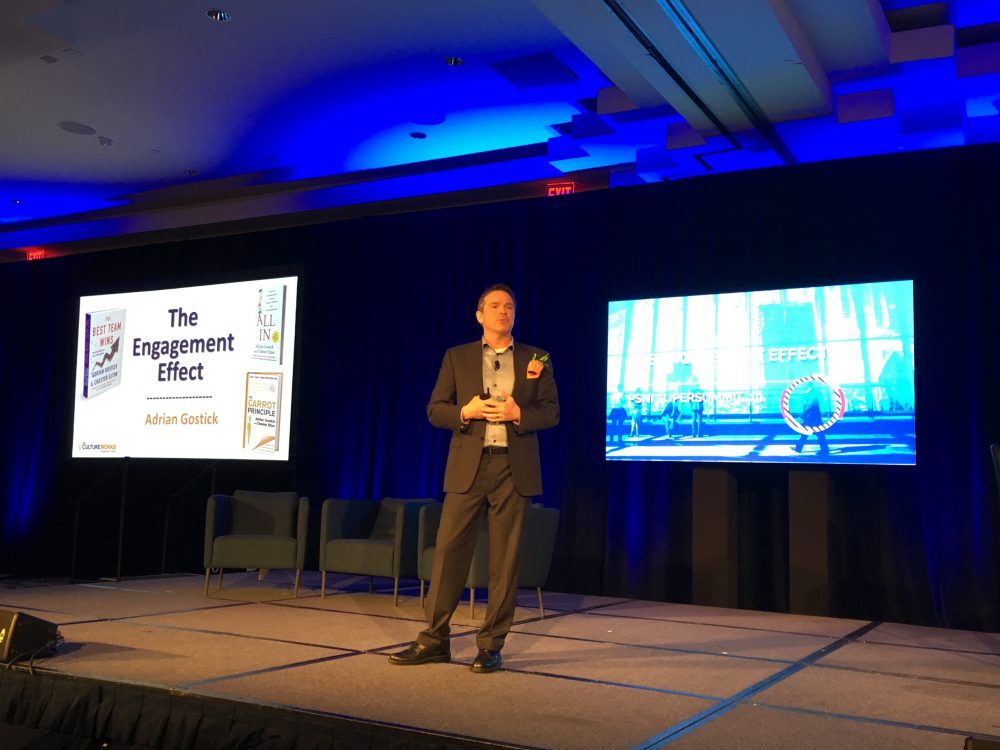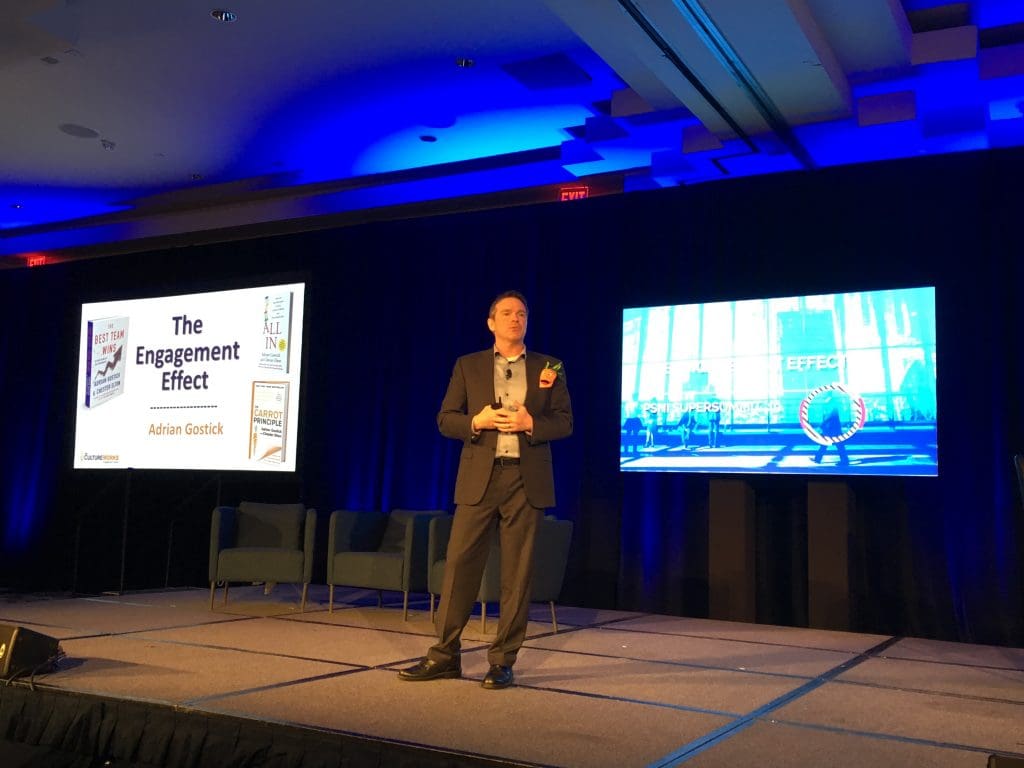When author Adrian Gostick delivered his keynote address at the 2014 NSCA Business & Leadership Conference, he highlighted the need for executives to ensure they had ways to keep their employees engaged.
Almost five years later at the PSNI Supersummit, Gostick told the 180 or so attendees that keeping your employees engaged isn’t enough anymore. If you truly want to find—and keep—the industry superstars or be able to develop them, you need to keep your employees enabled and energized too, he says.
“You can’t just focus on engagement anymore,” says Gostick, noting that an engaged culture is one in which people believe what they do matters and is making a difference. “Are you all in? Are your people? You own your culture and it’s going to have a big impact on your success.
“There are a lot of people who do what you do. You have to differentiate yourself somehow,” he says.
[related]Gostick, owner of The Culture Works, shared the results of a 10-year study that included responses from about 850,000 people and found that companies with high levels of employee engagement, enablement and energy were three times more profitable than those with low employee engagement levels.
The drivers of success, he says, include opportunity, well-being, trust and pride.
Alignment drives pride, meaning if you believe in your company’s mission, you’ll be happy to work there and share stories of that happiness with your friends and family members. Communication drives trust, meaning if you feel like the boss is being straight with you, you’ll follow in his or her footsteps.
Finally, appreciation drives opportunity and well-being, meaning if you feel like the people around you value your contributions, it will make you continue to work hard and move up the corporate ladder. Gostick has dubbed that “the carrot principle” and even has a plush mascot he hands out to audience members who answer his questions correctly to drive home the point.
“Good leaders focus on what to do and how,” says Gostick. “The great leaders remind us why they’re doing it.” That’s a critical distinction in an age when two-thirds of employees believe their mothers could run the businesses for which they work better than their actual bosses.
Are You an Engaging Leader?
Engaging leaders “manage to the one,” challenge everything and root for each other, says Gostick. It’s also important for you to remember engagement is a one-on-one skill and a two-way street, he says.
Engaging leaders also challenge everything and make everyone feel comfortable to speak up and share their thoughts on a particular topic, even if it’s a dissenting opinion.
If your manager listens to you, helps you grow, shares feedback and delivers a balanced approach, it’s incumbent on employees to share their aspirations, seek growth opportunities, embrace the feedback and maintain that balanced approach to their work.
Engaging leaders also challenge everything and make everyone feel comfortable to speak up and share their thoughts on a particular topic, even if it’s a dissenting opinion. That gives voice to positive radicals, those who think outside the proverbial box but often come up with the most creative new ideas.
Finally, engaging leaders root for each other, says Gostick. In a 2013 Harvard Business Review study, the top-ranked leaders had more than five positive comments or pieces of feedback for their employees for every negative comment.
“Great teams cheer for each other,” says Gostick, noting it’s important to offer recognition often with some level of specificity and sincerity and not to wait until too much time has passed to dole out praise.
People are typically broken down into five identities in the workplace: achievers, builders, care-givers, reward-driven and thinkers. Those five identities come along with 23 motivators, says Gostick, meaning you can’t manage everyone on your staff the same way.
“You can’t look at everyone as being motivated like you,” he says.





